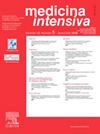如何让患者和家属参与改善重症监护服务的安全?
IF 3.1
4区 医学
Q2 CRITICAL CARE MEDICINE
引用次数: 0
摘要
患者安全是卫生系统的一个优先事项,对危重患者尤其重要。尽管近年来与之相关,但许多患者遭受不良事件,对专业人员和机构造成伤害和负面影响。促进了许多安全做法,并制定了战略,这些战略已纳入体制政策,从而改善了安全文化。但是仍然有一些不发达的策略,例如将患者和家庭成员的参与纳入他们的安全。直到最近,患者和家属一直被认为是接受保健服务的被动部分,而不是主动部分,更不是提高安全防范护理过程中发生错误的可能机会。危重病人和/或家属必须了解情况,最好接受培训,以促进他们积极参与安全工作。这不是转移责任,而是通过加强他们的安全来促进和促进他们的参与。专业人员必须致力于他们的安全,并为鼓励他们参与创造条件。我们提供工具和思考,以帮助专业人员在患者和家属通过强化医疗服务时实现安全参与。本文章由计算机程序翻译,如有差异,请以英文原文为准。
¿Cómo implicar al paciente y familia en la mejora de la seguridad en los servicios de medicina intensiva?
Patient safety is a priority for health systems and is especially relevant for critically ill patients. Despite its relevance in recent years, many patients suffer adverse events with harm and negative repercussions for professionals and institutions.
Numerous safe practices have been promoted and strategies have been developed that have been incorporated into institutional policies and thereby improving the safety culture. But there are still underdeveloped strategies, such as incorporating the participation of patients and family members in their safety.
Until recently, the patient and family have been considered as a passive part in the reception of health services, not as an active part, much less as a possible opportunity to improve safety against errors that occur during care.
The critically ill patient and/or family members must be informed and, ideally, trained to facilitate active participation in their safety. It is not about transferring responsibility, but about facilitating and promoting their participation by reinforcing their safety. And professionals must be committed to their safety and facilitate the conditions to encourage their participation.We provide tools and reflections to help professionals implement the participation of patients and family members in safety as they pass through intensive medicine services.
求助全文
通过发布文献求助,成功后即可免费获取论文全文。
去求助
来源期刊

Medicina Intensiva
CRITICAL CARE MEDICINE-
CiteScore
2.70
自引率
20.00%
发文量
146
审稿时长
33 days
期刊介绍:
Medicina Intensiva is the journal of the Spanish Society of Intensive Care Medicine and Coronary Units (SEMICYUC) and of Pan American and Iberian Federation of Societies of Intensive and Critical Care Medicine. Medicina Intensiva has become the reference publication in Spanish in its field. The journal mainly publishes Original Articles, Reviews, Clinical Notes, Consensus Documents, Images, and other information relevant to the specialty. All works go through a rigorous selection process. The journal accepts submissions of articles in English and in Spanish languages. The journal follows the publication requirements of the International Committee of Medical Journal Editors (ICMJE) and the Committee on Publication Ethics (COPE).
 求助内容:
求助内容: 应助结果提醒方式:
应助结果提醒方式:


